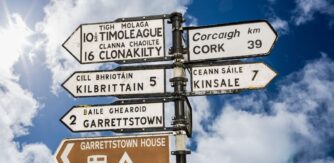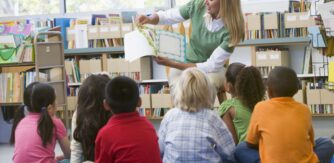Blog 2: Why wouldn’t you learn Irish? Exploring the creative possibilities of language learning
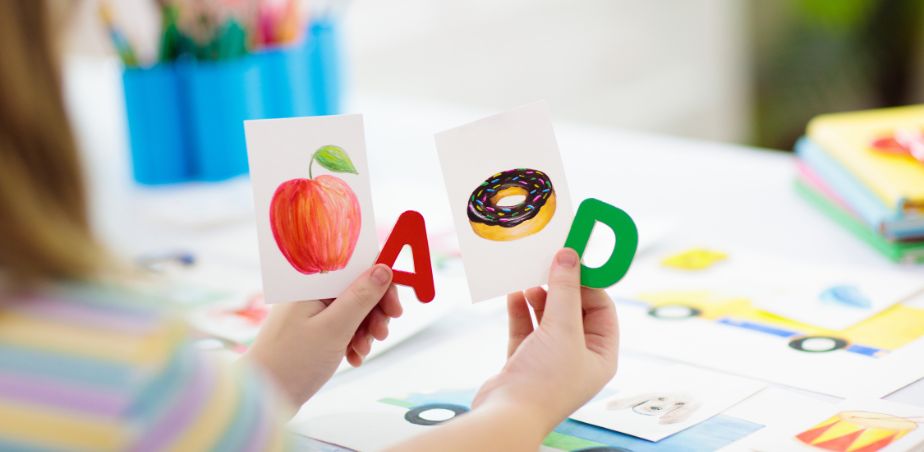
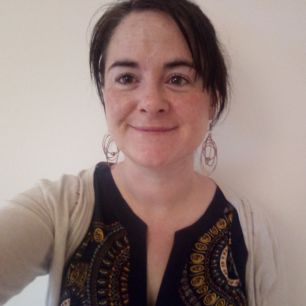
Claire Dunne is an Assistant Professor in the Institute of Education in DCU. Prior to that, she was Head of the Department of English and the Department of Irish at Marino Institute of Education. She worked as a lecturer in Irish and a translator in Marino for 17 years.
Previously, she was a primary teacher and worked as a translator for the company Sanas. She holds an MA in Intercultural Studies and a PhD in Applied Linguistics. She is very interested in the learning and teaching of Irish.
Learning or acquiring another language is an enriching experience that gives us different windows on the world. It allows us to tap into our creative self and explore different facets of our identity. The following series of blogs will examine the varying ways that Irish can contribute to our creative selves.
Why wouldn’t you learn Irish? Exploring the creative possibilities of language learning
In her second blog post of the series, Dr Claire Dunne explores how learning an additional language has been shown to have many benefits, including the development of creative and flexible thinking, helping us make connections, as well as supporting future language learning.
Learning Irish gives us different perspectives
Insights from the Irish language can help us have a nuanced understanding of the world. Think of how feelings and emotions are described in Irish. Tá áthas orm. Tá fearg orm. In Irish you can say that a feeling comes on you and then leaves. This is an interesting perspective showing that feelings can be transient and don’t have to define us.
Oide and Buime are the original words for teacher in Irish. They are also synonyms for foster parent. The full meaning of our role as educators is encapsulated in this Irish term and serves as a reminder to care for children beyond their academic achievement.
Learning Irish is important to foster a connection with our environment
It is no surprise that the places in the world with the largest degree of biodiversity also have the largest range of languages spoken, e.g. Papua New Guinea. Living sustainably is linked to a respect for diversity in both our physical and social environment.
Proverbs and idioms in Irish have an enduring importance. As we see in the examples below, they often relate to the landscape and help us to explore how our ancestors came to understand and live in harmony with their environments, and how we can draw on that wisdom today.
Éist le fuaim na habhann agus gheobhaidh tú breac.
An té nach gcuirfidh sa earrach ní bhainfidh sé san fhómhar.
Ní hé lá na gaoithe lá na scolb.
Learning Irish helps us make connections with other languages
Irish is often the first additional language that a child encounters and so this experience lays the foundation for future language learning experiences. Learning Irish helps contributes to our entire linguistic repertoire. The journey that Irish speakers made to different corners of the world meant that the language mixed with and was enriched by other languages. Equally, Irish the language has been influenced by the communities that came to the island. Word for navigation and travel came into the language with the arrival of sea-faring Vikings, for example.
Irish has some similarities with other indigenous Celtic and languages (e.g. Cant, Welsh, Scots Gaelic). Try using your Irish-language skills to help you count to 10 in Welsh! The numbers 1-10 are in Irish in the lefthand column. The numbers 1-10 are in Welsh are in the righthand column but they are not in the correct order! Can you see any similarities between the numbers in Irish and Welsh (and other languages) that will help you match the Irish and Welsh numbers.
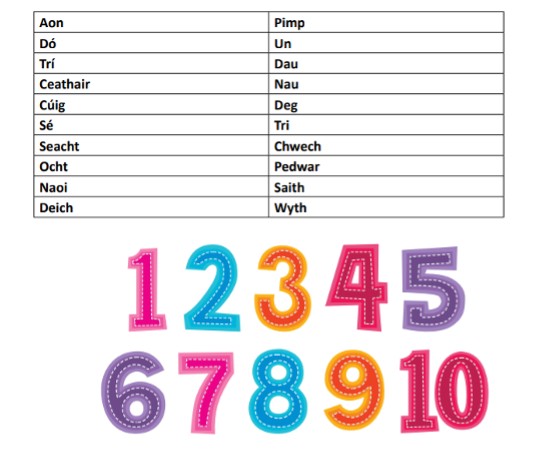
Have a look at more activities to explore the connections between the Irish language and living sustainably in Sceitimíní (Cuid 5).
Have a look at more activities to explore the connections between the Irish language and other languages in Léitheoirí Líofa (Cuid 8) and Sceitimíní (Cuid 4).
